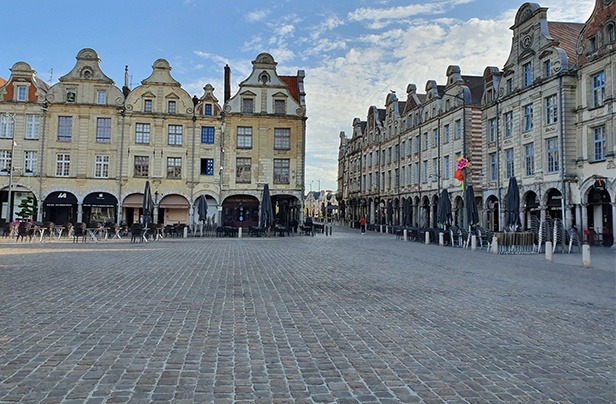Artois, with its strategic location and rich history, found itself at the center of intense disputes throughout the 16th century. This era was marked by constant shifts in power, territorial claims, and the ambitions of great empires. One pivotal moment in this period came in 1499 when Archduke Philippe le Beau, heir to the illustrious House of Burgundy and son of Maximilian, paid homage to French King Louis XII. His entrance into Arras symbolized a brief assertion of French influence over the region. However, this control was soon contested as Charles V, a key figure in European history, sought to impose his authority over these lands.
The turning point for Arras and the region of Artois came with the famous Battle of Pavia in 1525. This battle, still studied and discussed among historians, dramatically altered the political landscape. The subsequent Treaty of Madrid in 1526 and the Treaty of Cambrai in 1529 formalized the loss of French sovereignty over Flanders and Artois, placing these territories firmly under the control of the Habsburg Empire. It was a period of uncertainty and upheaval, with Arras at its heart. By 1532, amid widespread famine caused by the ravaging of the countryside, the tensions in Arras boiled over into violent riots. In a stark display of desperation, the granaries of Saint-Vaast were looted by the mob, a vivid reminder of the societal pressures and instability of the time.
Charles V’s arrival in Arras
The years that followed brought little respite to the people of Arras. Despite intermittent truces, the region endured devastation. Villages stretching from the hills of Artois to St-Pol-sur-Ternoise were burned down, and the scars of conflict were visible across the landscape. It was not until the death of François I in 1547 that Charles V managed to reassert control in the area. His visit to Arras in 1549 was a significant event, reinforcing the imperial presence in these contested lands. This period marked a series of visits by Charles V to the city in the early 1550s, just before his eventual abdication in 1555. These visits were a clear demonstration of the strategic importance that Arras and the wider region held for the Habsburgs.
Peace seemed finally within reach with the signing of the Peace of Cateau-Cambrésis in 1559. This agreement brought a much-needed cessation of hostilities between the Valois of France and the Habsburgs of Spain. As part of this peace, France retained control of Calais, which had been reconquered from the English in 1558. Meanwhile, Spain regained sovereignty over the remnants of the Burgundian provinces in the Netherlands, including Artois and Arras. While Arras remained relatively isolated from the subsequent religious upheavals that swept through Europe, it did face a dramatic moment in 1597 when King Henri IV attempted to recapture the town. In a remarkable show of defiance, the town’s bourgeois militia successfully repelled the assault, securing Arras’s fate as a bastion of Spanish influence. True peace, however, only came with the Peace of Vervins on May 2, 1598, which finally brought stability to the region.

Arras and the Spanish influence
During the ensuing period of Spanish rule, although the number of Spaniards in the Artois region was relatively small, the impact of their administration on Arras was profound. The region was governed from Ghent, and at the time, Charles V extended his influence across the seventeen provinces of the Low Countries. His son, Philip II (1527-1598), ruled the vast Spanish Empire from Madrid, delegating the administration of the northern territories to his half-sister, Marguerite de Parme, in Brussels. She remained in charge until replaced by the formidable Duke of Alba in 1567.
The Duke of Alba, a name that still resonates in historical accounts, is particularly remembered for his harsh suppression of the “Nederlandse Opstand” – a popular uprising that shook the Spanish Netherlands, leading to two years of intense conflict. As governor, the Duke enforced strict control over the rebellious provinces, which included parts of the present-day region of Artois.
During this period, Arras was overseen by a Governor of Artois, a position that wielded significant military, political, and administrative power. The Governor presided over the Estates of Artois and was deeply involved in the region’s governance, often working closely with the newly established Artois Provincial Council.
For Arras, Spanish influence brought both challenges and opportunities. King Philip II made several attempts to enhance the city’s economic and urban stature, particularly focusing on the development of its plazas. One notable effort was in 1578 when he sought to reunify the city and the surrounding town. Although this initiative ultimately failed, it signified the strategic importance Philip placed on Arras as a hub of commerce and trade. The city’s economic landscape flourished due to these policies, especially following the aforementioned Treaty of Cambrai, which granted Arras an exemption from duties on goods imported into and exported from France. As a result, the town became a thriving center for the trade of various commodities, including cloth and, more notably, wine, which flowed through its bustling markets.
X.D.
